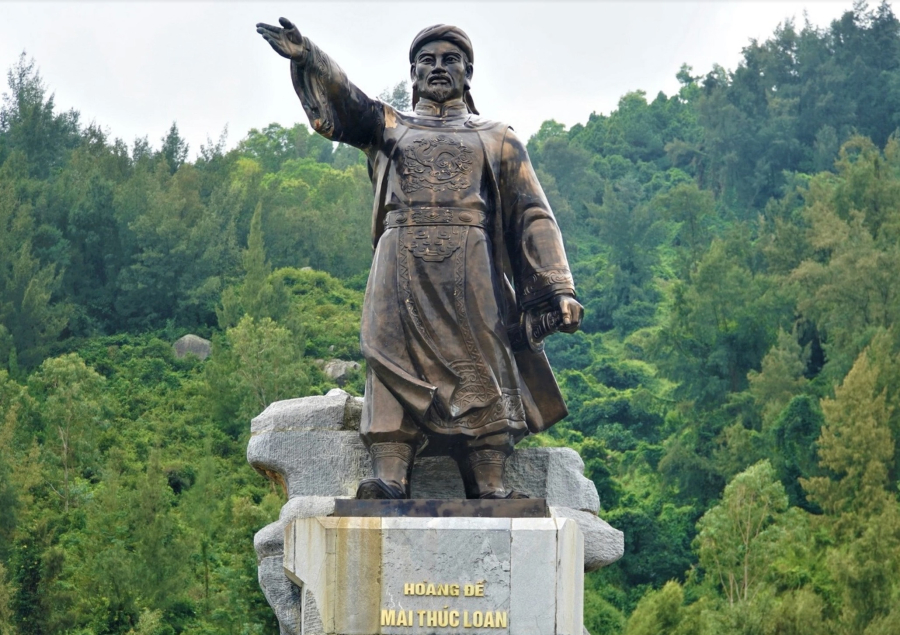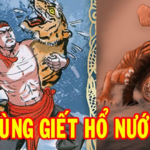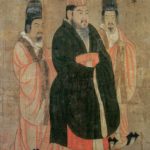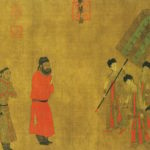Mai Thu Loan, known as Mai Black Emperor, born in 670 and died in 723, is originally from Mai village, Loc Ha district, Ha Tinh province. He is recognized as a hero with exceptional intelligence, talent, and outstanding courage.
During the chaotic period of the country, Mai Black Emperor did not submit to the rule of the invading army from the North, but recruited talents and forces from 32 regions. He also established alliances with Southeast Asian countries including Lam Ap, Chan Lap, Cha Va, and Kim Lan to resist the Tang Dynasty.
When he ascended the throne, history called him Mai Black Emperor, or “Black King” because of his special skin color. During his reign, the country achieved independence and self-governance for nearly a decade from 713 to 722.
In 723, when Mai Black Emperor passed away, people everywhere, especially in the Southern region, honored him as a god of luck and built temples to commemorate him and his warriors, with the largest temple named after him in the present-day Nam Dan town.

King Mai Black Emperor, the famous national hero for his uprising against the Tang Dynasty’s domination in the early 8th century, is revered and remembered by the people through many historical relics. Notable among them is the Mai Black Emperor temple in Nghe An, which preserves unique cultural and historical values.
With 22 royal seals, it reflects the reverence of feudal dynasties for the brave king. 13 royal seals from the Nguyen Dynasty are still preserved in the temple, serving as valuable materials to help us understand more about the life and career of Mai Black Emperor.
The name of the famous king is given to many major roads, schools, demonstrating the gratitude and respect of the people. The Mai Black Emperor temple is grandly built, through many renovations and upgrades, becoming a destination that attracts travelers from all directions.
The impressive gate, majestic palaces, along with military and literary statues, kneeling elephants… create a solemn and sacred space. The lower palace houses the dragon throne, tablets, couplets… significant historical artifacts.

About 3km west of the temple, along the 42 dike, the majestic Mausoleum of King Mai Black Emperor is situated at the foot of Mount Dun. This place is not only the resting place of the national hero but also an attractive tourist destination, thanks to its significant historical and cultural value.
With an area of over 10,000m2, the mausoleum was once a warehouse and the last stronghold of the righteous army in the fight against invaders. Leaning against Mount Dun, the mausoleum faces the poetic Lam River, creating a grand and magnificent natural scenery.
Inside the mausoleum, the buildings are constructed in the “upper temple, lower tomb” style with harmonious architecture. After the entrance gate are sacrificial altars, incense burners, well and temple gate, two waiting houses, and lower palace. Following are the lower palace, upper palace, left and right worship halls arranged in a square shape.
The lower palace is where the community worship, while the left and right worship halls honor the three talented generals: First, Second, Third, and Fourth Tru Thu. The upper palace is where the statue of King Mai Black Emperor, the father of King Mai, and King Mai’s son, Mai Thieu De, are worshipped, showing reverence and gratitude to the hero’s great contribution in resisting foreign invaders.
Inside the spacious wooden palaces ranging from 50-70m2, visitors can admire precious artifacts related to the Hoan Chau uprising, such as statues of Mai Black Emperor, swords, spears, armor,…

Located on the top of Mount Dun, about 50m north of Nam Dan town, is the tomb of Mai Thieu De, the youngest son of Mai Black Emperor. This place marks the glorious achievements of the national hero in the Hoan Chau uprising against the Tang Dynasty’s domination.
About 10km away, Con De Hill – a low hill surrounded by fields in Nam Thai commune – is the final resting place of King Mai’s mother. To reach the tomb, visitors need to climb over 100 steps. According to historical documents, on one occasion of going up the mountain, Mai Thuc Loan’s mother was attacked by wild animals, and the king and villagers brought her back to be buried at Con De Hill.
At the shrine of King Mai Black Emperor, many festivals are held annually, but the most notable is the Mai Temple Festival, which lasts for 3 days from the 13th to the 15th of the lunar month. The festival includes meaningful activities such as water procession, opening ceremony, proclamation ceremony, grand ceremony, festival opening, and offering incense in memory of King Mai. Visitors can also immerse themselves in lively traditional games such as wrestling, card games, cockfighting, swing, pole pushing, tug of war,…
The Mai Black Emperor Historical Site and Festival is evidence of the indomitable spirit, and the will for independence of the Vietnamese people. This heritage site was recognized as a Special National Monument in February 2023, affirming its significant historical and cultural value.


































